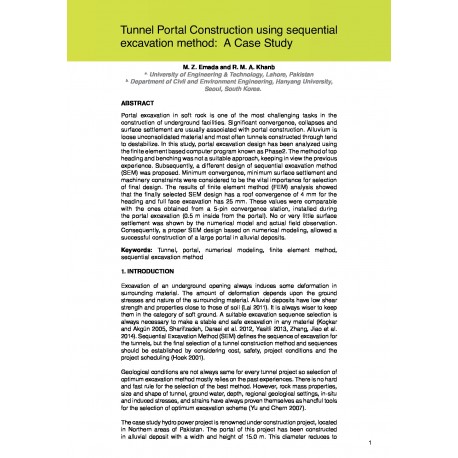Cart
0
0
No document
0,00 €
Total
Document successfully added to your shopping cart
Quantity
Total
There are 0 items in your cart.
There is 1 item in your cart.
Total documents
Total shipping
To be determined
Total
Search & filter
Search for a publication
Search & filter

Tunnel Portal Construction using sequential excavation method: A Case Study
1921_tunnel_portal_construction_
Portal excavation in soft rock is one of the most challenging tasks in the construction of underground facilities. Significant convergence, collapses and surface settlement are usually associated with portal construction. Alluvium is loose unconsolidated material and most often tunnels constructed through tend to destabilize. In this study, portal excavation design has been analyzed using the finite element based computer program known as Phase2. The method of top heading and benching was not a suitable approach, keeping in view the previous experience. Subsequently, a different design of sequential excavation method (SEM) was proposed. Minimum convergence, minimum surface settlement and machinery constraints were considered to be the vital importance for selection of final design. The results of finite element method (FEM) analysis showed that the finally selected SEM design has a roof convergence of 4 mm for the heading and full face excavation has 25 mm. These values were comparable with the ones obtained from a 5-pin convergence station, installed during the portal excavation (0.5 m inside from the portal). No or very little surface settlement was shown by the numerical model and actual field observation.


